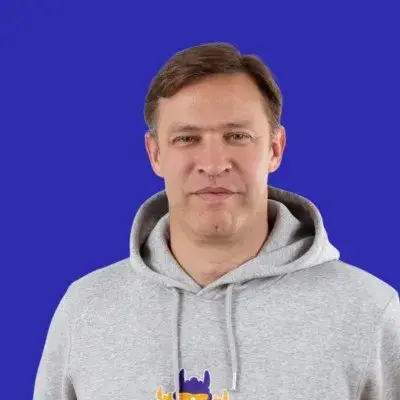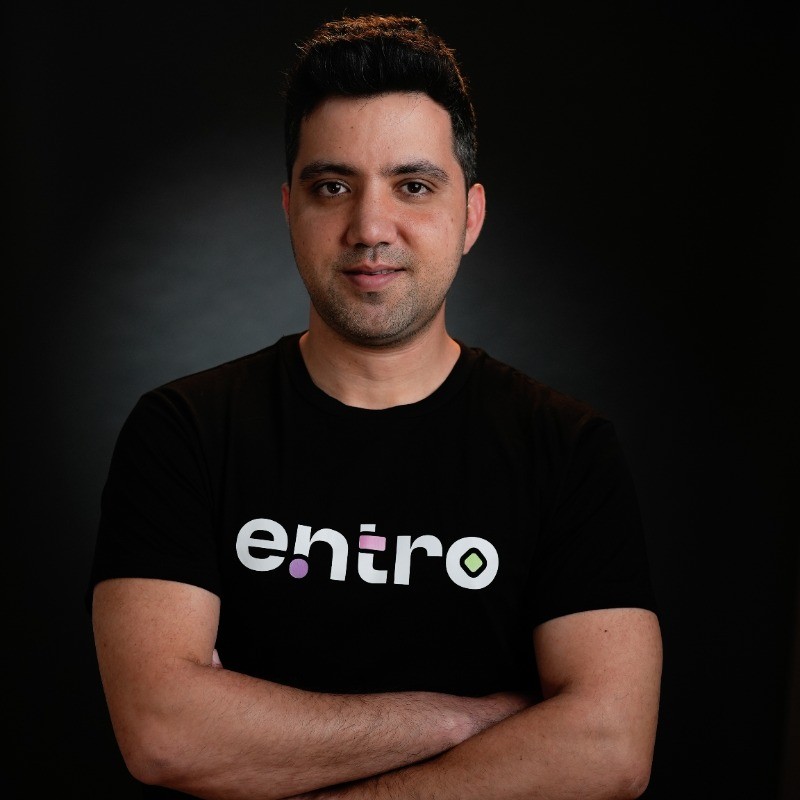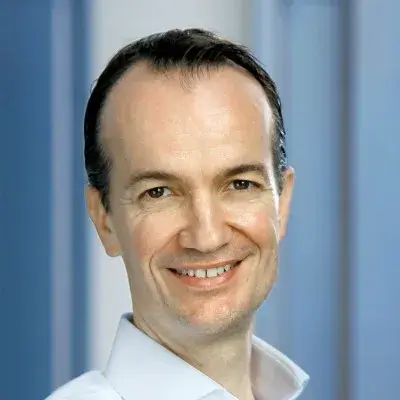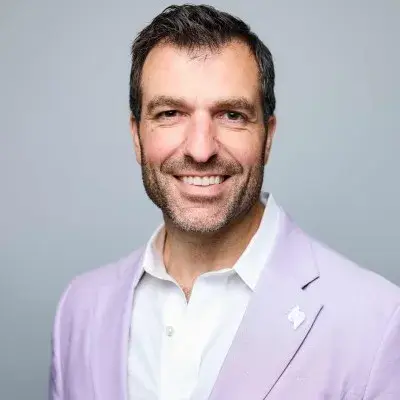Ready to build your own Founder-Led Growth engine? Book a Strategy Call
Frontlines.io | Where B2B Founders Talk GTM.
Strategic Communications Advisory For Visionary Founders
Actionable
Takeaways
Address systemic market failures through business model innovation:
Joe identified that cybersecurity's core problem wasn't technology quality but post-sale execution. "As an industry we have been really good at buying and selling products, but we've never been good. In fact, we've been terrible at their implementation and their lifecycle management." This insight led to Sophos's services transformation. B2B founders should look beyond surface-level customer complaints to identify fundamental market failures that create opportunities for entirely new business models.
Structure major strategic pivots as controlled experiments:
When proposing the MDR services pivot, Joe framed it as a measurable experiment rather than a leap of faith. "The conversation primarily consisted of, I want to run an experiment. Here are the parameters of the experiment that I would like to run... This is the investment that I think that we need to make in order to bootstrap it." This approach included specific cost models, growth projections, and profitability targets. B2B founders can reduce organizational resistance to major changes by presenting them as structured experiments with clear success metrics and defined risk parameters.
Invest heavily in stakeholder alignment during business model transitions:
The most challenging aspect wasn't technical but maintaining relationships with 25,000 channel partners who might view new services as competitive threats. Joe spent a full year ensuring partners viewed MDR as "augmentation and greater opportunity and an opportunity for them to offer tiering to the kinds of services that they're doing." B2B founders making significant business model changes must prioritize extensive stakeholder communication and alignment, especially when changes could affect existing revenue streams or partner relationships.
Shift sales focus from product features to guaranteed outcomes:
Sophos had to retrain their sales organization for services selling. "The fundamental difference between selling a product and selling a service is... what the expectations of the outcome that service is going to provide for them." Instead of selling technology specifications with implementation uncertainty, they began guaranteeing predictable business results. B2B founders transitioning to services models must fundamentally change their sales approach from feature-based selling to outcome-based value propositions.
Use strategic M&A to achieve immediate category leadership:
Rather than relying solely on organic growth, Sophos accelerated their MDR strategy through the $860 million SecureWorks acquisition. "It technically makes us the largest MDR operator, pure play cybersecurity MDR operator... on the planet today." The acquisition instantly provided market positioning that organic growth might have taken years to achieve. B2B founders should consider strategic acquisitions not just for technology or customers, but for category leadership and competitive positioning that enables further market expansion.
Build scale as a defensible competitive advantage:
Joe argues that scale is "an often overlooked but a critically important element when it comes to the selection of information technology vendors." In platform businesses handling massive data volumes and real-time operations, the ability to operate at scale becomes a key differentiator. "The customer should be asking them, what are your strategies in order to be able to scale?" B2B founders in platform businesses should explicitly communicate their scaling strategies to customers and position their ability to handle growth as a core competitive advantage, especially when competing against smaller vendors.
Conversation
Highlights
How Joe Levy Transformed a 40-Year-Old Cybersecurity Company into a $1.5 Billion Services Platform
Most technology companies struggle to reinvent themselves once, let alone multiple times across four decades. Yet Joe Levy, CEO of Sophos, has orchestrated one of the most remarkable transformations in cybersecurity history—taking a traditional antivirus company founded in 1985 and turning it into a $1.5 billion ARR services-driven platform.
In a recent episode of Category Visionaries, Joe revealed the strategic decisions, organizational challenges, and market insights that enabled this transformation. His story offers crucial lessons for B2B founders navigating their own pivots and scaling challenges.
The Market Failure That Created a $500 Million Opportunity
Joe’s transformation of Sophos began with a fundamental realization about cybersecurity’s core problem. “There is a market failure in cybersecurity,” Joe explained. “As an industry we have been really good at buying and selling products, but we’ve never been good at their implementation and their lifecycle management.”
This insight wasn’t theoretical—it came from Joe’s experience in the 1990s building some of the earliest business networks in Salt Lake Valley. “Back in the day when we were dealing with static IP addresses, like the concept of a firewall was a very foreign idea,” Joe recalled. “Very, very few organizations had them or knew what they were.”
Working at a value-added reseller, Joe witnessed firsthand how the combination of technology and services could deliver predictable outcomes. “I recognized very early that in order to succeed with the delivery of information technology and cybersecurity services, you’re best off having a fusion between technology and services, because that’s going to give you a better ability to deliver predictable outcomes to your customers.”
This early experience planted the seeds for what would become Sophos’s managed detection and response (MDR) transformation nearly two decades later.
Structuring Major Pivots as Controlled Experiments
When Joe proposed launching MDR services in 2018, he faced significant internal resistance. Sophos had built a successful business model around product sales through 25,000 channel partners. The idea of adding services that might compete with partner offerings created natural skepticism.
Joe’s solution was to frame the pivot as a measurable experiment rather than a leap of faith. “The conversation primarily consisted of, I want to run an experiment. Here are the parameters of the experiment that I would like to run,” Joe explained. “This is the investment that I think that we need to make in order to bootstrap it. This is what the cost model for the first three years of operations will look like.”
The structured approach included specific projections: “These are the projections and the forecast of growth that we expect to be able to get through attached to our existing customer base, new customer acquisition. These are the metrics that I intend to deliver back to the business.”
This experimental framework reduced organizational risk while maintaining accountability. “It really was just an experiment in the early days, but I would have to say it was one of the most successful and one of the most definitional experiments that I’ve ever been part of in my life.”
The Challenge of Changing Organizational DNA
The hardest part of Sophos’s transformation wasn’t technological—it was cultural and operational. “The hardest part of the transition I would say was on the go to market side of things,” Joe noted. “When you have a really well oiled sales machine, it’s difficult to change the behaviors.”
Two major challenges emerged: maintaining channel partner relationships and retraining the sales organization.
For channel partners, Joe spent a full year ensuring they understood MDR as an opportunity rather than a threat. “We needed to test the idea with our channel partners so that they did not feel threatened by what we were doing. They needed to believe that we were not going to introduce conflict into their business models.”
The sales transformation required a fundamental mindset shift. “The fundamental difference between selling a product and selling a service is not thinking about the way that it’s going to get delivered or what the customer expectations are necessarily going to be,” Joe explained. “But rather what the expectations of the outcome that service is going to provide for them.”
Instead of selling uncertainty—where customers had to figure out implementation—Sophos began selling guaranteed outcomes. “Now what you’re doing is you’re selling something that’s much more predictable because you’re saying, we are going to deliver an outcome to you with this service that we’re selling.”
Strategic M&A for Category Leadership
By 2024, Sophos had organically grown their MDR business to over $200 million ARR. But Joe recognized that achieving category leadership required more than organic growth. The solution came through the $860 million acquisition of SecureWorks, a publicly traded company specializing in managed XDR and MDR services.
“We acquired SecureWorks, which was a publicly operating company in the managed XDR and MDR space,” Joe explained. “They brought over about $300 million in ARR. So the combined business puts us at just over $500 million in MDR business.”
The acquisition instantly transformed Sophos’s market position. “It technically makes us the largest MDR operator, pure play cybersecurity MDR operator out of some of the GSIs who also do MDR on the planet today.”
Joe’s integration philosophy emphasized speed over gradual change. “The sooner that you can get all of the changes done, the better off you are,” he said. “There is a tendency in M&A that I’ve seen over the years where you do things gradually, in phases. Those things, I think, are more likely to stir discontent within organizations because of the uncertainty.”
Scale as a Competitive Advantage
One of Joe’s key insights concerns the underappreciated importance of scale in cybersecurity. “Scale is an often overlooked but a critically important element when it comes to the selection of information technology vendors and cybersecurity vendors,” he argued.
The challenge stems from the nature of cybersecurity operations. “These systems are expected to deal with sometimes trillions of discrete data points every single day, and then to run analytics on those platforms and then to embed AI workflows into those models.”
Most vendors struggle as they grow. “Most vendors, as they begin to feed in the market and they begin to accumulate customers and they begin to accumulate more nodes and more identities, they begin to recognize the real world complexities of operating these systems at scale.”
Joe believes customers should evaluate vendors’ scaling strategies. “The customer should be asking them, what are your strategies in order to be able to scale? And this I think is often overlooked. It doesn’t really show up on RFPs, for example.”
The Future: Democratizing Cybersecurity Strategy
Joe’s vision for Sophos extends beyond managed services to what he calls “the democratization of cybersecurity.” His research revealed a staggering gap in the market: “There are approximately 32,000 people in the world who have a CISO or a CISO-like title.”
With 359 million organizations globally, this means “fewer than 1 in 10,000 organizations have a strategy when it comes to how they’re going to do cybersecurity better.”
Joe sees this as the next transformation opportunity. “The same way that we’ve gone from products to services, now we need to go from services to strategies,” he explained. “This, I think is one of the fundamental missing ingredients within the industry today.”
The solution involves combining AI capabilities with platform scale and MSP partnerships. “I believe that there is a path to being able to do that, number one, because we are enabled by the platforms that I was describing, where we’ve got repositories of data that can operate in real time.”
Lessons for B2B Founders
Joe’s transformation of Sophos offers several crucial lessons for B2B founders:
Address market failures, not just customer complaints. Joe looked beyond surface-level customer feedback to identify the systemic implementation problem plaguing cybersecurity.
Structure major pivots as experiments. By defining clear parameters, investments, and success metrics, Joe reduced organizational resistance to change.
Invest heavily in stakeholder alignment. Spending a full year ensuring channel partner buy-in prevented the transformation from destroying existing relationships.
Consider scale as a competitive moat. In platform businesses, the ability to operate at massive scale becomes a key differentiator.
Use strategic M&A for category leadership. The SecureWorks acquisition achieved in months what organic growth might have taken years to accomplish.
Joe’s journey from a 1985 antivirus company to a $1.5 billion services platform demonstrates that with the right strategic vision and execution, even the most established companies can reinvent themselves for new market realities. As cybersecurity continues evolving, Sophos’s transformation story will likely serve as a blueprint for other companies navigating their own industry disruptions.


















































































































































